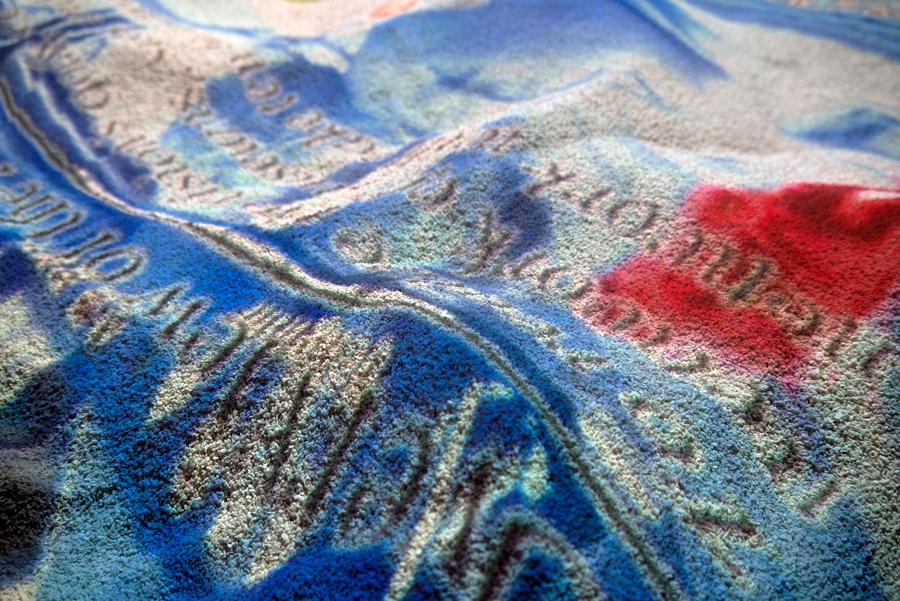Hito Steyerl’s Factory of the Sun, which drew much attention at this year’s Venice Biennale, invokes the aesthetic of post-internet art. The same can be said for Liquidity Inc. (2014), her video installation currently on exhibit at Galerie KOW. The video tells the story of former Lehman Brothers analyst Jacob Wood, born in Vietnam, who began a career as a professional kickboxer after his employer went bankrupt in the 2008 financial crisis. The artist uses collage effects to spin a dense web of references presenting the supple flexibility of water as a metaphor for financial liquidity and the fluid nature of capital, as well as for the movements of a martial artist and for the natural catastrophes caused by climate change: a kickboxing arena; Wood preparing for the fight; ring card girls strutting their stuff; a flatscreen in the rafters showing a surfer riding ocean waves.
Suddenly the flatscreen is sitting in the modernist offices of a financial firm, and a moment later the surfer appears on smartphone display. In voiceover, the former analyst draws parallels between his former and new professions. In this video, at every turn employing state-of-the-art computer animation, the categories of space and time continually collapse in on themselves. To paraphrase Paul Virilio, the speed of the most modern media – which we surf everyday, predominantly on the web – has enabled the confluence of everything at any time. In Liquidity Inc., this image of everything always influencing everything finds its metaphor in a ‘capital weather repor’”, in which ‘trade winds’ and ‘data clouds’ determine global events. This work is compelling not least for its rapid succession of appealing, albeit suggestive images of thoroughly modern production and a style bespeaking the aforementioned post-internet art, while Steyerl – and this sets her apart from this genre – addresses explicitly precarious issues like financial crisis and climate change.
The ‘politainment’ of Liquidity Inc. is juxtaposed by three augmented lecture-performances, in the basement of the gallery, providing a serious, indeed almost scientific form of political engagement. These works comprise PowerPoint presentations and clips of Steyerl presenting her talks. In Duty Free Art (2015), for example, the artist speaks of the correlation between the operating system of art, the arms industry and the neoliberal financial world. The point of departure in this case is the function of museums not only in promoting national identities, but also in the creeping redistribution of public assets into private hands after armed conflict, such as the targeted establishment of a National Museum in Syria, in which the Louvre, the British Museum and the star architect Rem Koolhaas all play a role. Later, of course, Duty Free Art also examines how art – in the context of globalisation – is increasingly degenerating into a lucrative object of speculation. The so-called freeports, where expensive works of art are stored, trafficked and sold duty free, command the focus of the nearly 38-minute talk, illustrated with images of Geneva’s freeport and a letter from Rem Koolhaas to Assad, the Syrian president and mass murderer. The artist presents the lectures in a style that is conspicuously perfect, indeed almost aseptic. Although at times they are edited to parodic effect, they seem to conform to academic requirements in every respect; the artist hereby succeeds in explicitly countering the standards of supposedly professional work with the cliché of ‘activist chaos’
As persuasive as this exhibition is, however, the shown works nevertheless raise the difficult question of whether their formal perfection actually precludes the artist’s intended political effect. That is to say, perhaps this art plays along all too well with the system it itself criticises.
Hito Steyerl: Left to Our Own Devices, at KOW, Berlin, 17 September – 5 December 2015
This article was translated from the German by Jonathan Lutes, and first published in the December 2015 issue.
